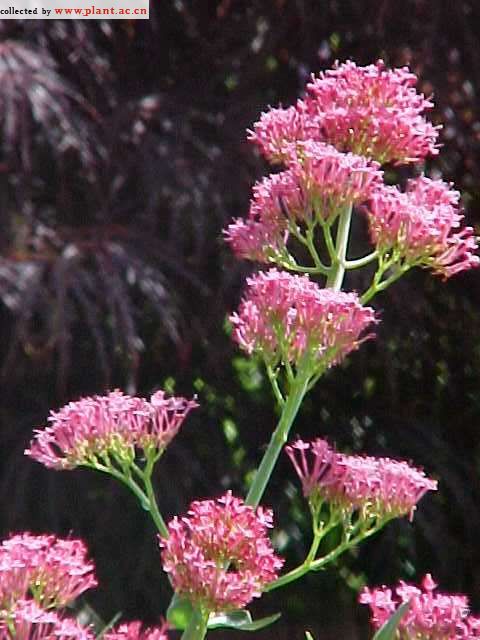Centranthus ruberRed valerian
科:败酱科
Family:Valerianaceae
common name:Red valerian
introduce:Plant Type: Herbaceous perennial
Family: Valerianaceae
Missouri Native: No
Native Range: Europe & North Africa to Asia Minor
Height: 1.5 to 3 feet
Spread: 1 to 2 feet
Bloom Time: May
Bloom Color: Pale to crimson red
Sun: Full sun to part shade
Water: Medium moisture
Maintenance: Medium
General Culture:
Easily grown in average or sandy, medium wet, well-drained, soils in full sun to part shade. Prefers slightly alkaline soils in full sun. Does well in poor, infertile soils where it usually grows in a more compact form. Freely self-seeds in optimum growing conditions to the point of being invasive and weedy. Promptly remove (shear if large planting) spent flower stems to encourage additional bloom and to prevent seeds from forming. Plants are generally less vigorous in the hot and humid summers of the South than in cool summer climates.
Noteworthy Characteristics:
Red valerian or Jupiters beard is a well-branched, bushy, clump-forming, woody-based perennial which is valued for its ability to produce a showy bloom in poor soils from spring to frost. Late summer to fall bloom can be quite sporadic, however. Small, star-shaped, red flowers appear in dense terminal clusters (cymes) atop upright to relaxed stems rising above the foliage to 3 tall. Flowers are fragrant. If not deadheaded, flowers give way to dandelion-like seed heads which are dispersed around the landscape by wind. Fleshy, gray-green, oval to lance-shaped leaves to 4" long. Although native to the Mediterranean, this plant has escaped gardens and naturalized in certain parts of the United States, particularly along the west coast.
No serious insect or disease problems. Mealy bugs and aphids are occasional visitors.
Uses:
Cottage gardens. Naturalized areas. Stone walls. Slope or bank cover to help combat erosion. Borders, particularly as specimens or in small groups where planting can be more easily managed.
